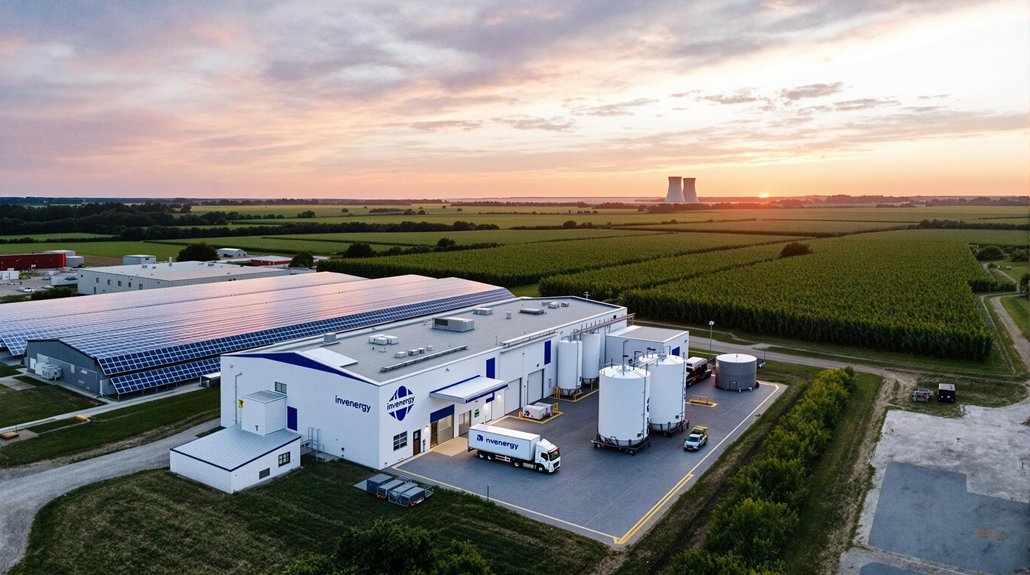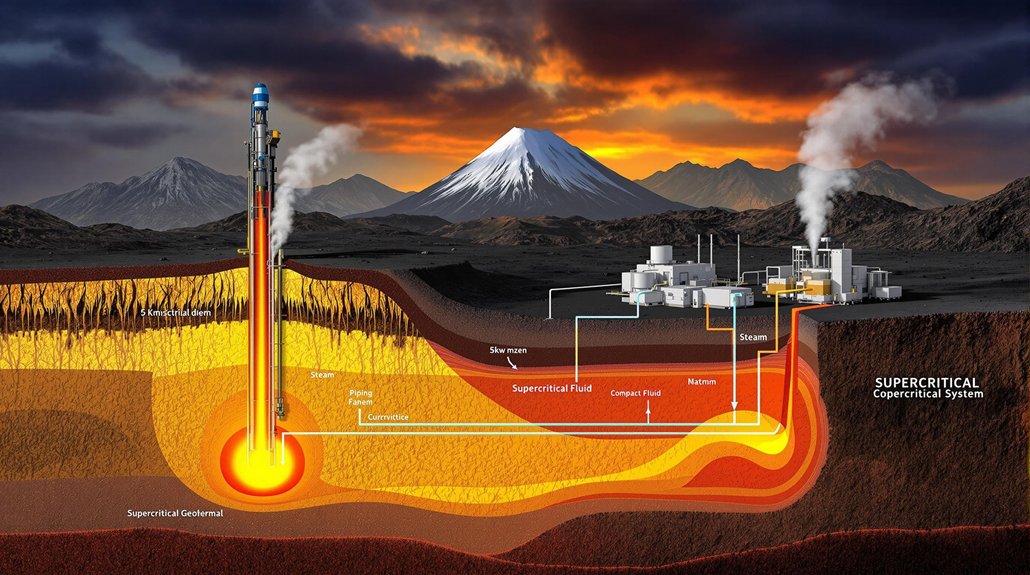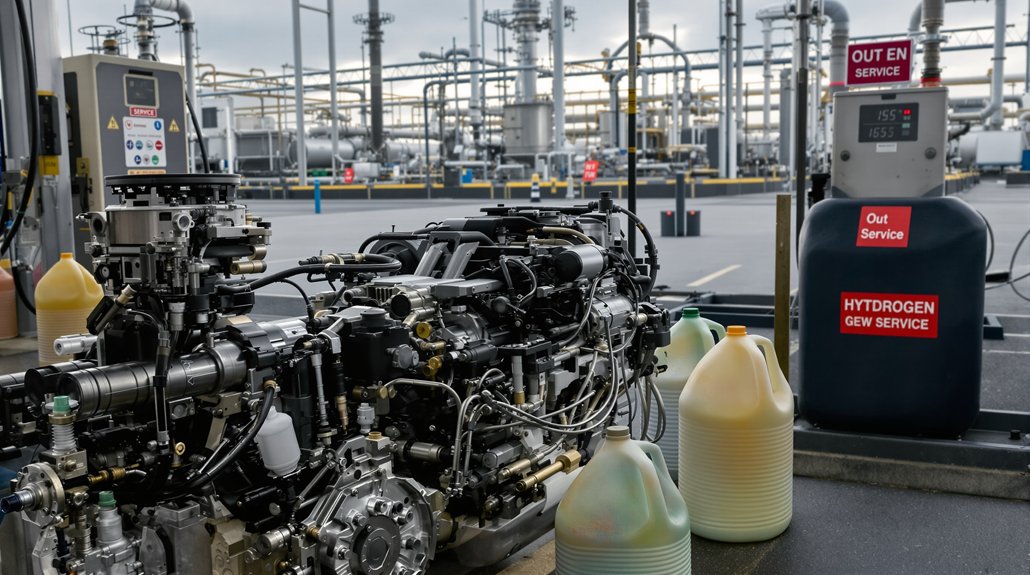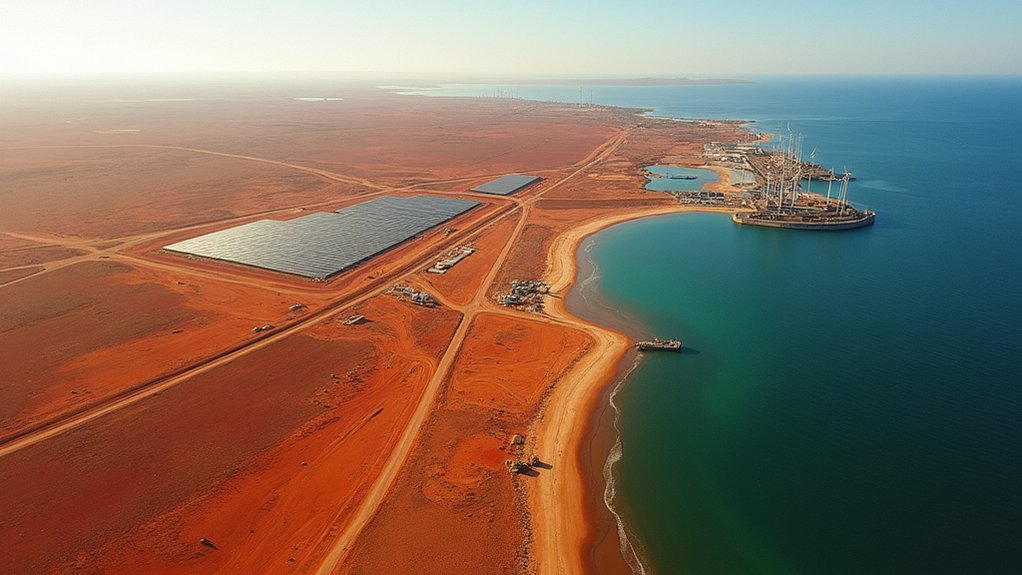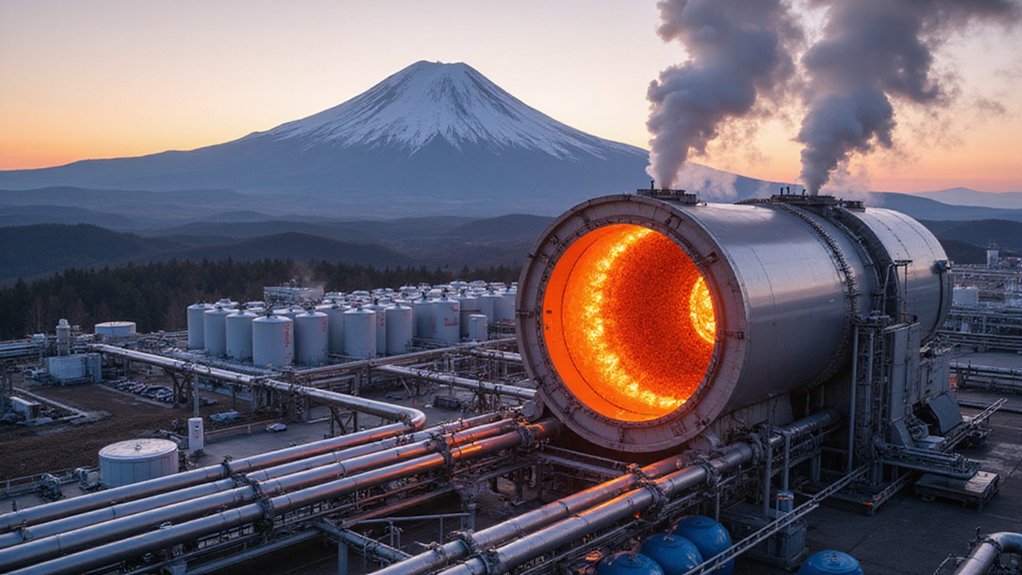Invenergy’s Sauk Valley Hydrogen Facility in Rock Falls, Illinois is now operational. Launched March 2025, this 5-acre plant produces 40 metric tons of zero-carbon hydrogen yearly using solar power. Already supplying the Nelson Energy Center and making deliveries to Aether Fuels, it’s creating jobs while targeting trucking and transit sectors. Illinois isn’t messing around with clean energy. The facility represents just the beginning of the state’s ambitious hydrogen economy plans.
Several years in the making, Invenergy’s Sauk Valley Hydrogen Facility has finally hit its stride. The 5-acre site in Rock Falls, Illinois began construction in early 2023 and reached commercial operations in March 2025. No small feat. This marks Invenergy’s first venture into clean hydrogen production, adding to their already impressive roster of 21 clean energy projects across Illinois.
The facility isn’t exactly massive—just 40 metric tons of annual hydrogen production—but size isn’t everything, folks. Using Ohmium International’s PEM electrolyzer technology, Sauk Valley can churn out 6 kg of hydrogen per hour, with storage capacity for 400 kilograms on-site. Pretty decent for a first attempt.
What makes this operation actually “green” is its power source. The hydrogen production runs entirely off a co-located solar plant, meaning the electrolysis process—you know, splitting water into hydrogen and oxygen—doesn’t come with the usual carbon baggage. Zero-carbon hydrogen, as the marketing folks love to say.
The initial hydrogen supply serves a practical purpose: cooling turbine generators at the nearby Nelson Energy Center, a 980 MW natural gas facility. Not exactly revolutionary, but you’ve got to start somewhere. The project showcases Invenergy’s continued investment in Illinois through diverse sustainable energy solutions.
The plant has already completed its first offsite delivery to Aether Fuels, with plans to target the fuel cell heavy trucking and transit bus markets. Ambitious. The facility is also designed specifically for loading and transportation of hydrogen to serve multiple end users across various industries.
For Illinois, this represents more than just another energy project. It positions the state as a leader in the emerging hydrogen economy—creating jobs, attracting investment, and helping decarbonize those stubborn industrial sectors that can’t easily switch to batteries. The facility operates with high efficiency rates similar to geothermal heat pumps that achieve 300-500% efficiency in energy conversion.
Could this be scaled up? Absolutely. Invenergy clearly sees this as a test case for larger hydrogen developments, possibly integrating with the Midwest Hydrogen Hub initiative.
The company has its eyes on a net-zero emissions goal by 2050. Lofty targets, indeed—but at least they’ve got something tangible to show for it now.
